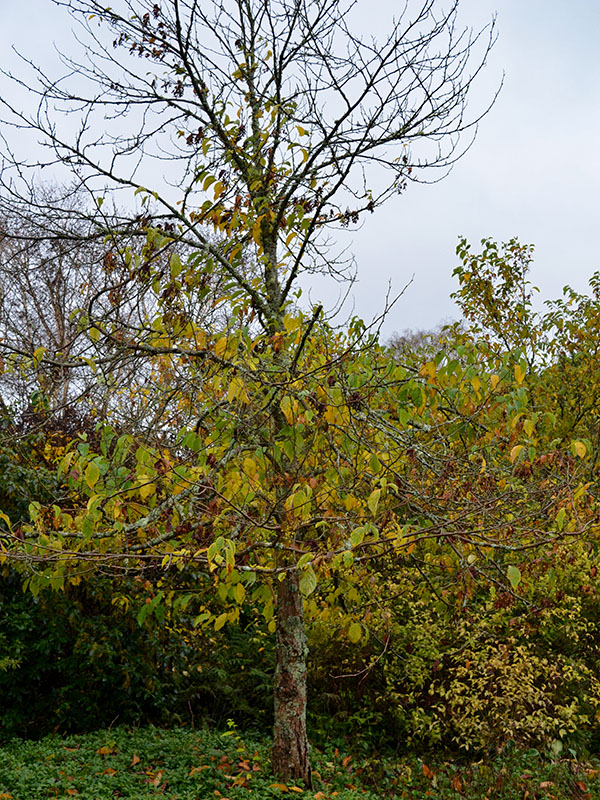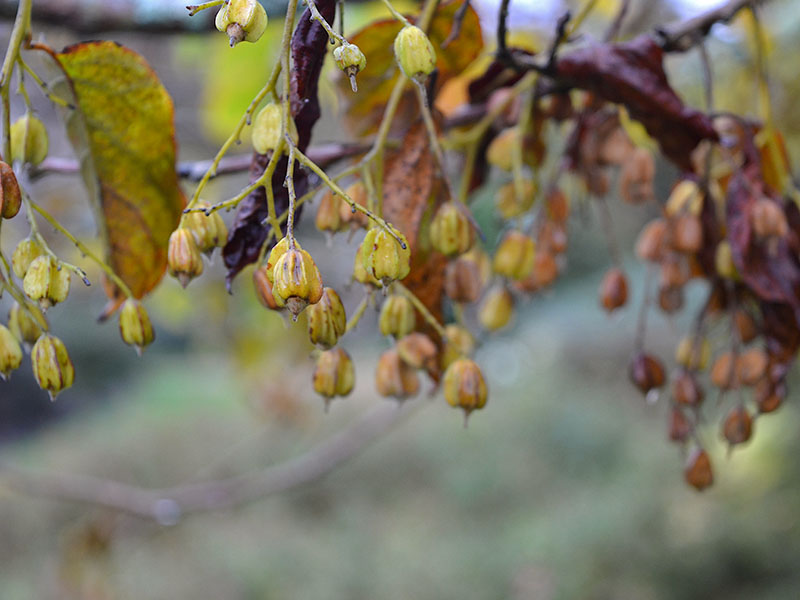
Woody > Pterostyrax > Pterostyrax corymbosa > Pterostyrax corymbosa
Pterostyrax corymbosa
Little EpauletteTtree
Origin: Native to Japan.
| Family |
| Styracaceae |
| Genus |
| Pterostyrax |
| Species |
| corymbosa |
| Category |
| Woody |
| Type |
| Tree (deciduous), Shrub (deciduous) |
| USDA Hardiness Zone |
| 7 - 8 |
| Canadian Hardiness Zone |
| 7b |
| RHS Hardiness Zone |
| H5 |
| Temperature (°C) |
| -15 to -10 |
| Temperature (°F) |
| 5 - 14 |
| Height |
| 7 - 17 m |
| Spread |
| 6 - 12 m |
Photographs
Description and Growing Information
Flowering Period
| General Description |
| Pterostyrax corymbosa is a low-growing, often broad-statured tree with many white blooms hanging down below the branches in spring. The ribbed fruit persists into winter. |
| Landscape |
| This tree is not widely used or recognized in the landscape trade. However, since it is somewhat pollution tolerant it could be used as a street tree. Typically it is used in patio borders or as a specimen. It will provide year-round interest with fragrant, showy flowers in spring, yellow autumn cloak and winter fruit. |
| Cultivation |
| Tolerant of acidic to partially alkaline soil containing clay, loam or sandy loam. The soil must be moist and well-drained. There is a specimen in the A. M. Cuddy Gardens growing in partial shade on heavy, clay soil and it seems to thrive and flower profusely without flaw each year. Should be planted in situations where it is protected form the cold winds of winter. |
| Shape |
| Fairly rounded, sometimes demonstrating a more vase-like shape. When the specimen is young it tends to be more compact. As it ages the slender, low branches grow more openly. It can be quite broad in form, similar in character to Cornus alternifolia. |
| Growth |
| Medium |
| Pests |
| No pests or diseases of note. |
| Habitat |
| Found growing in open woodland areas and on sloping terrain. |
| Notable Specimens |
| Wakehurst Place, Ardingly, Haywards Heath, Sussex, England. |
| Propagation |
| By seed sown in autumn into containers and placed in a vented cold-frame to overwinter. Seed need a minimum of 5°C for three months to ensure germination. Also by semi-hardwood cuttings collected in late summer and rooted under mist and bottom heat. |

